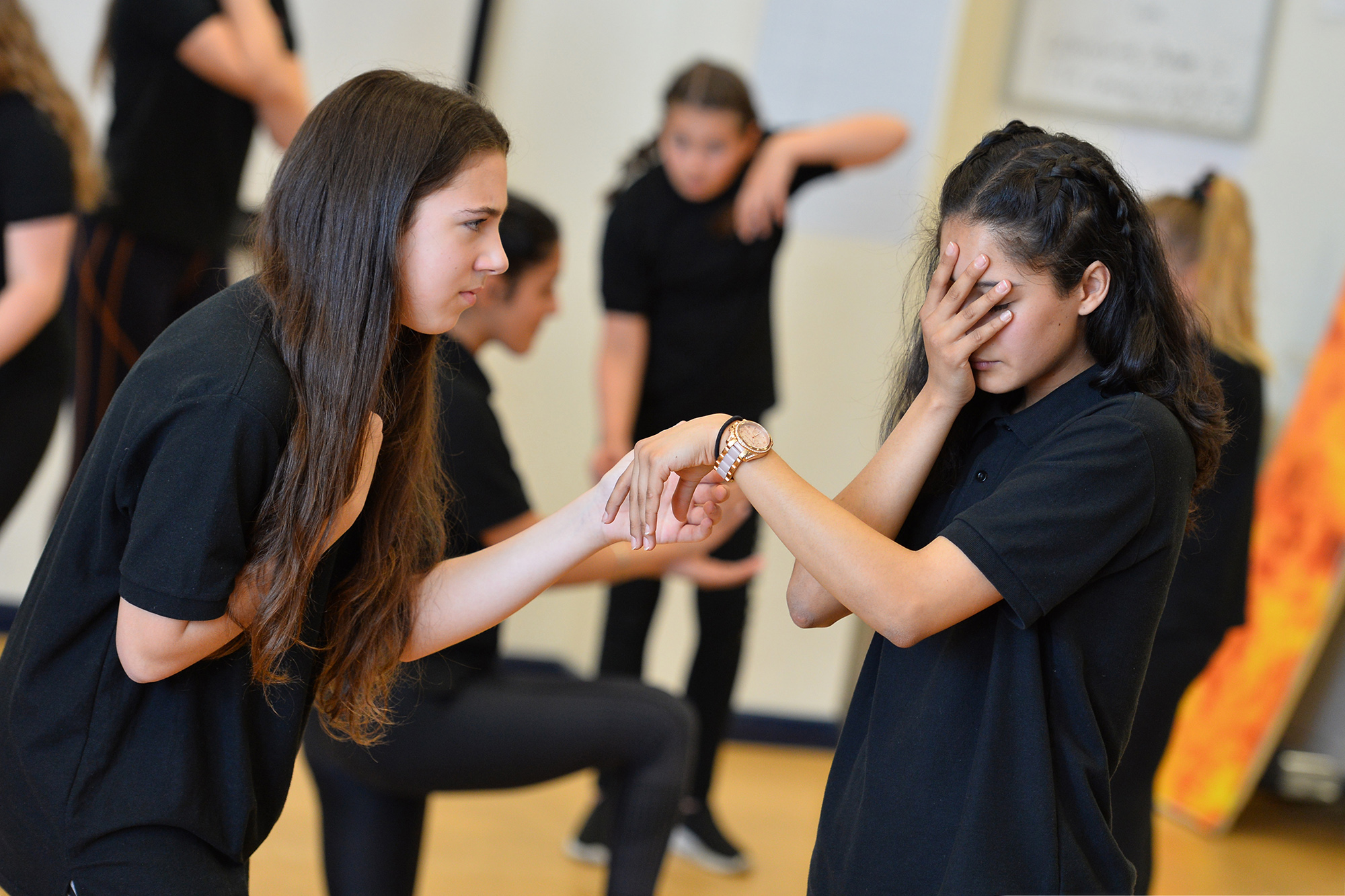
Exploring Drama Tasks- Mime
BY: Nicola King
19 August 2024
In both our Acting and Speech & Drama specifications, at Initial and Foundation (Solo) grades, candidates are required, or at some grades given the option, to perform a mime. Some teachers may wonder why it is that Trinity places an emphasis on mime at these levels, what examiners are looking for, and how they can help prepare their candidates for this task. In this blog we will aim to answer these commonly asked questions.
Two useful mime terms for teaching at Foundation level, that we will use throughout this blog, are:
Objective Mime: this refers to illusions of objects and place. This includes the creation of weight, size, space.
Subjective Mime: this term covers the expression of feeling, thought and motivation, again with the whole body not just the face, hands, and arms.
Mime is an important foundation step because it encourages students to develop an understanding of body language (posture, movements, gestures, etc.) and how to use this as a form of communication. Within our exams, the tasks involving mime test a candidate’s ability to produce performance which demonstrates a thoughtful interpretation, use of body and space, a sense of a spontaneity and conscious awareness of audience.
Through exploring mime at the earlier grades candidates learn how to tell a story or communicate an emotion physically and, as they progress through the grades, they continue to build on this skill. Although they are not asked to perform a mime at the higher grades of Speech & Drama or Acting, their demonstration of a physical engagement with the piece and their understanding of how to embody the language or meaning of the piece, remains an important skill.
When preparing your students for any task it is important to look at the attainment descriptors and assessment criteria for that grade and consider what it is your candidate is being asked to demonstrate.
In Grades 1 and 2 for Speech & Drama and Acting (Solo) the mime task’s emphasis is on storytelling. This encourages candidates to create an imaginary world clearly and communicate feeling and thought physically (with the whole body not just the face).
At Grade 1 candidates should:
- create a simple storyline
- Begin to use Subjective Mime – i.e. communication of thoughts and feelings through use of the whole body
- Begin to use Objective Mime (illusion) in creating the world of the mime
- Demonstrate some sense of spontaneity and engagement in the world of the mime.
At Grade 2 candidates should:
- create a simple and clear storyline
- demonstrate some sustained use of Subjective Mime – i.e. communication of thoughts and feelings through use of the whole body to convey mood and atmosphere.
- make some accurate use of Objective Mime (illusion) in creating the world of the mime
- demonstrate a spontaneity and engagement in the world of the mime.
In Grades 1 and 2 it is frequently a good idea to create a mime from an activity that the candidate has done before and is familiar with.
At Grade 3 Speech & Drama and Acting, the prepared mime encourages candidates to approach the communication of narrative, characterisation, and subtext/thought process physically, with the intention that a more physical approach to the use of text becomes part of their work in this and later grades. At this grade, examiners are looking to see a higher standard in terms of mime technique. The main objective is to assess whether the candidate has understood narrative, character, and subtext fully enough to communicate it without words.
At Grade 3 candidates should:
- demonstrate evidence of a physical exploration and understanding of an aspect of the original story/speech/poem e.g. the narrative, subtext, atmosphere on which the mime is based
- demonstrate some sense of spontaneity, of being ‘in the moment’, with thought process and inner monologue guiding the mime and being shared with the audience.
- Show evidence of appropriate technical skills
By Grade 3 candidates should be demonstrating a more technical understanding of mime: inhabiting the world of the mime effectively and creatively. Candidates should be able to demonstrate some sustained use of ‘Subjective Mime’ – i.e. communication of thoughts and feelings through use of the whole body to convey mood and atmosphere. They should also be able to make some accurate use of ‘Objective Mime’ (illusion) in creating the world of the mime e.g. solid illusions, effective use of space.
A common difficulty candidates face when performing the mime task is a lack of development of the story or situation; candidates run out of ideas and perform a short piece that does not give them opportunities to demonstrate the skills the examiner is looking for. It will help to pay close attention to the timings given in the specifications and if your candidate’s piece is significantly shorter work with them on developing the story of their piece. When teaching mime, one of the most important things your student can learn is that they must really believe the physical context of their piece; if they believe what they are doing and what they are seeing, then they will find it much easier to develop that story. Remember, if candidate believes what they are seeing, the examiner will too!
For more guidance on mime watch this excellent video with our examiner Mollie Guilfoyle, and download our Guidance on Mime resource, which has useful examples of appropriate mimes at Grades 1-3.
Don’t forget, if you have a candidate who would like to continue exploring mime and developing their technique at a higher grade, our Performance Arts syllabus allows this.




Comments & Replies